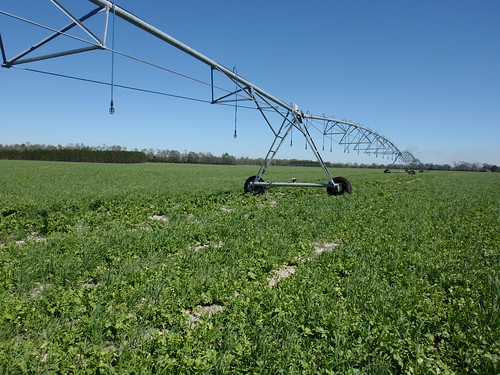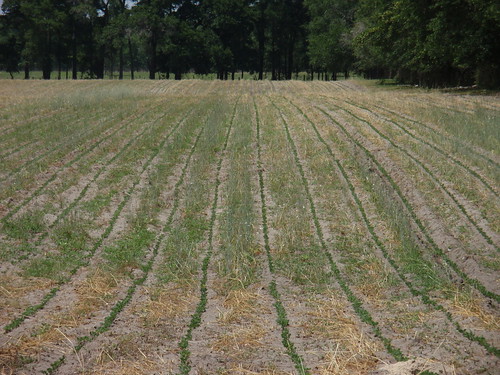
For three generations members of Mitch Holtzclaw’s family has farmed land in Suwanee County, Florida. Today, Holtzclaw grows more than 1,000 acres of peanuts, corn and small grains.
His farm is about three miles from the historic Suwannee River, which flows directly into the Gulf of Mexico. The sandy soil types and karst limestone topography on Holtzclaw’s farm are characteristic of the watersheds in the middle Suwannee River Basin and cause for concern over increased nutrient concentrations that can be found in the area’s ground and surface water.
The Holtzclaw family has worked with USDA’s Natural Resources Conservation Service (NRCS), over the years on several Environmental Quality Incentive Program conservation practices. So, when NRCS announced the national Gulf of Mexico Initiative, or GoMI, in response to the 2010 Deepwater Horizon oil spill, Holtzclaw saw an opportunity to incorporate new conservation farming techniques into his farm’s management system that conserve and help clean water.
“Getting cover crops started was the biggest benefit. Trying some new cover crop types to see what works best, and using cover crops on almost all our cropland has helped us use less water and improve our soil,” Holtzclaw said.
Since his GoMI contract began, he has experimented with several mixes of cover crops. Holtzclaw has already seen the benefits of growing cover crops in conjunction with his conservation tillage practice. He directly strip tills the cover crops, while efficient low-pressure irrigation systems with drop emitters reduce the amount of water used. Cover crops and drip irrigation help prevent soil erosion and deliver nutrients efficiently so that soil and nutrients don’t wash into waterways.
He also uses nutrient management conservation practices and soil test annually to determine the precise nutrient application needed.
Holtzclaw is not alone in implementing conservation practices that provide sustainable results on his land which also impacts the regions watershed system as a whole. Other agricultural producers in this area have voluntarily participated in the Suwannee River Partnership and implemented best management practices to help improve water quality.
GoMI has intensified this effort in Suwannee, Escambia and Lafayette counties that were also selected to participate in the national initiative.
He is now interested in energy efficiency programs and hopes to receive EQIP financial assistance when converting his old diesel irrigation motors to new high-efficient electric motors. He feels that all of these conservation programs not only benefit his land but also help his bottom line.

